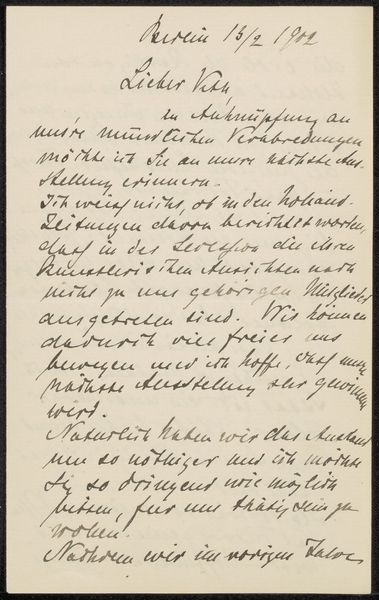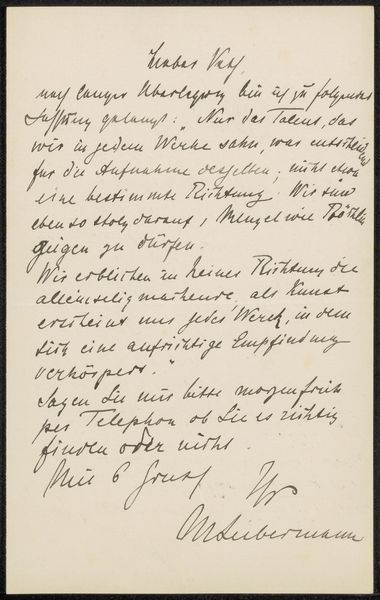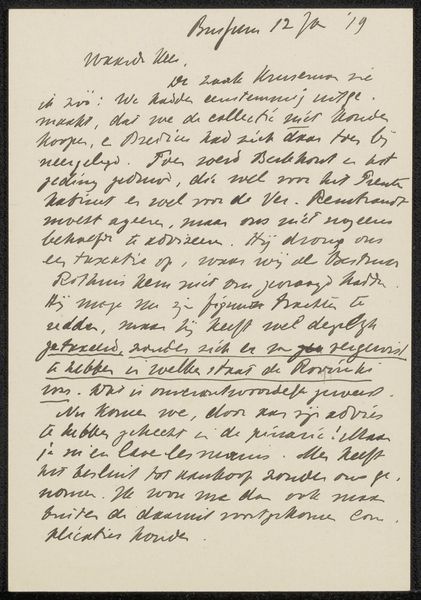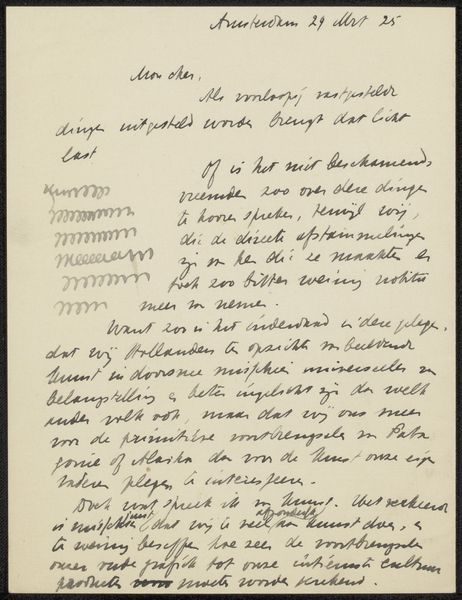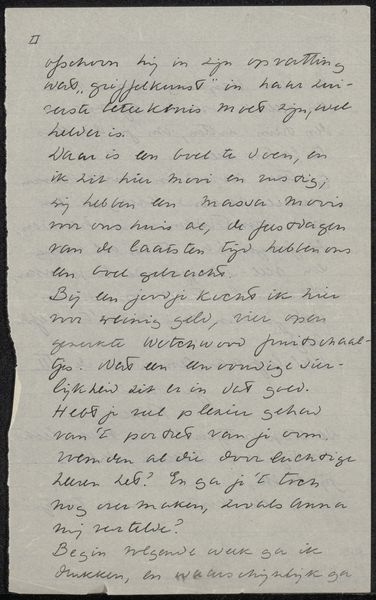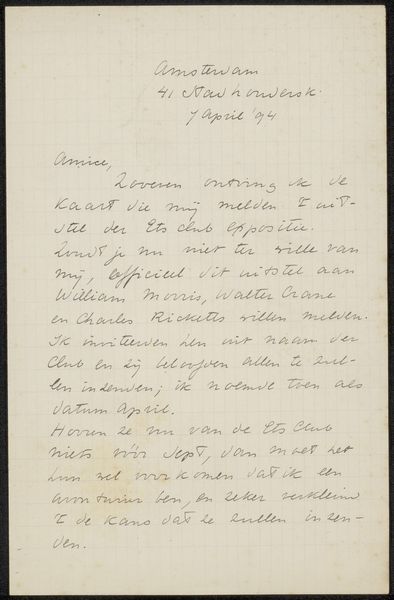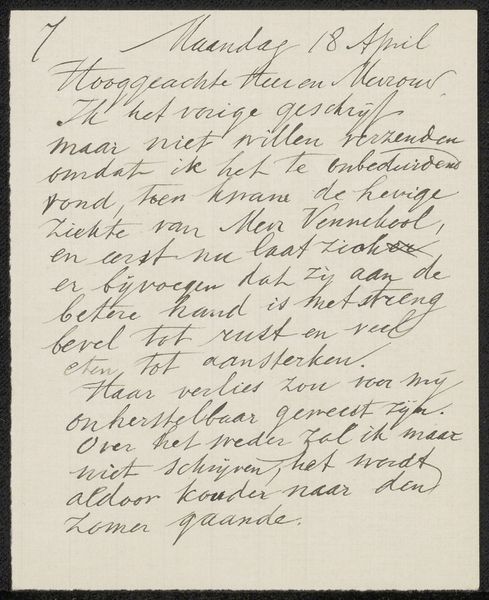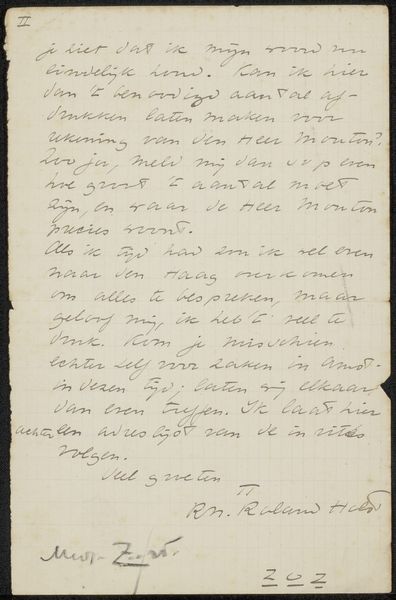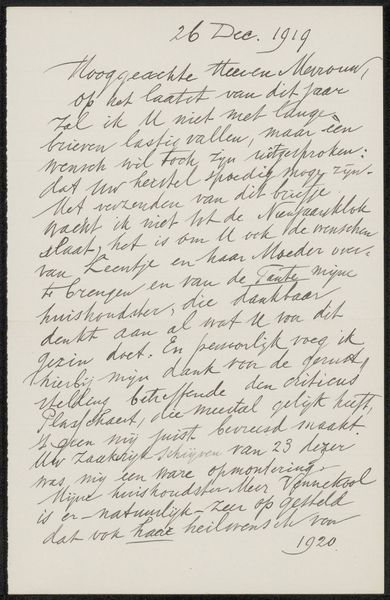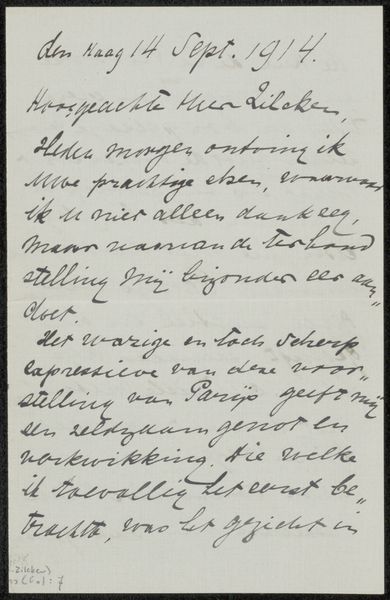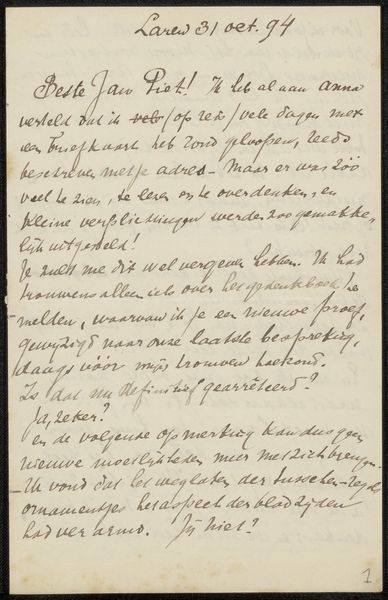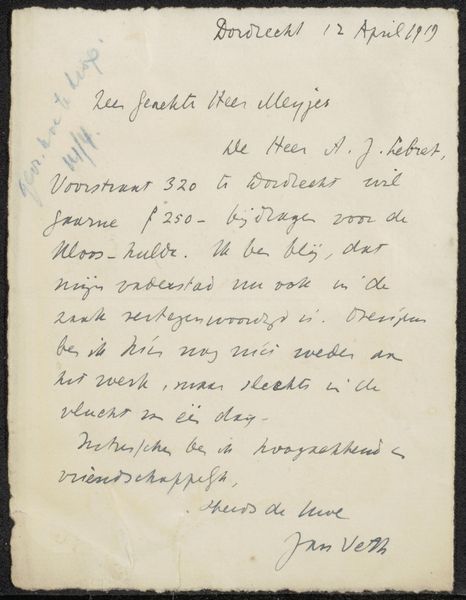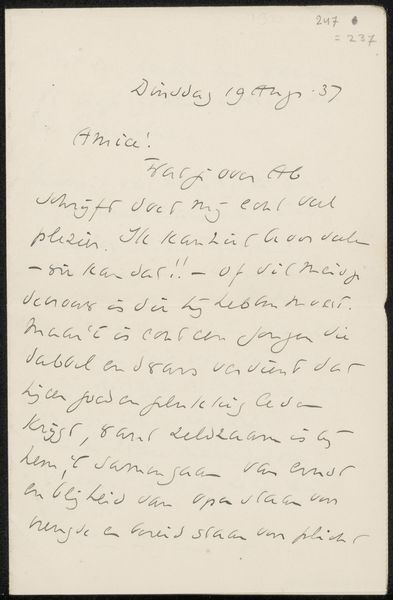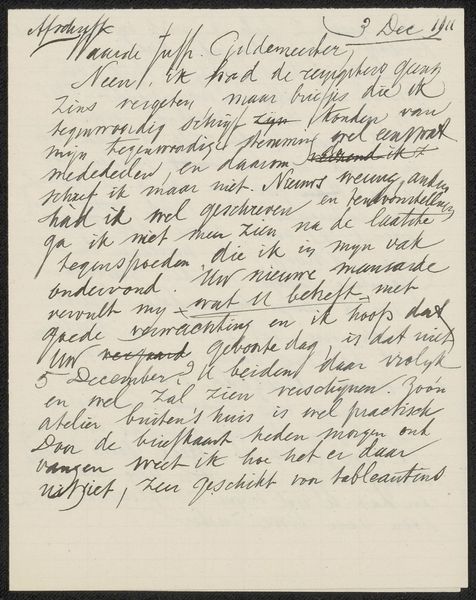
drawing, paper, ink
#
drawing
#
hand-lettering
#
hand lettering
#
paper
#
ink
#
modernism
Copyright: Rijks Museum: Open Domain
Curator: So, here we have Richard Nicolaüs Roland Holst’s "Brief aan Jan Veth," created in 1896 using ink on paper. It feels incredibly intimate, like a glimpse into a private conversation. What do you see here, beyond the immediate image of a letter? Editor: It's fascinating how personal it feels, even without knowing the contents. I'm curious about the context. Why preserve a handwritten letter as a piece of art? Curator: Exactly! Let's consider the act of letter-writing in the late 19th century. Before mass communication, letters were vital for intellectual and artistic exchange. This letter isn't just a message; it’s a document of a specific social network, of artistic circles shaping the cultural landscape of the Netherlands. Who were these men and why does this exchange matter? Editor: So, it's about more than just the individual words; it's about the network and the time period. The artist included 'hand lettering' as part of the tag, how does this play in? Curator: The "hand lettering" elevates the form itself. Consider William Morris and the Arts and Crafts movement, a resistance to industrialization championing handcraft and artistic integrity in everyday objects. How might this letter reflect similar values? It's both a personal communication and a deliberate aesthetic object. Do you think that adds value? Editor: I do see how that context adds to the power of this image. Considering the social implications brings new light, and a bigger picture overall. Curator: Precisely. By looking at this letter through the lenses of social history, artistic movements, and even the history of communication, we can understand it as a powerful artifact. It represents a network of people. And that makes you think differently? Editor: Definitely. Now, it feels more like a time capsule. I initially only saw a letter!
Comments
No comments
Be the first to comment and join the conversation on the ultimate creative platform.
